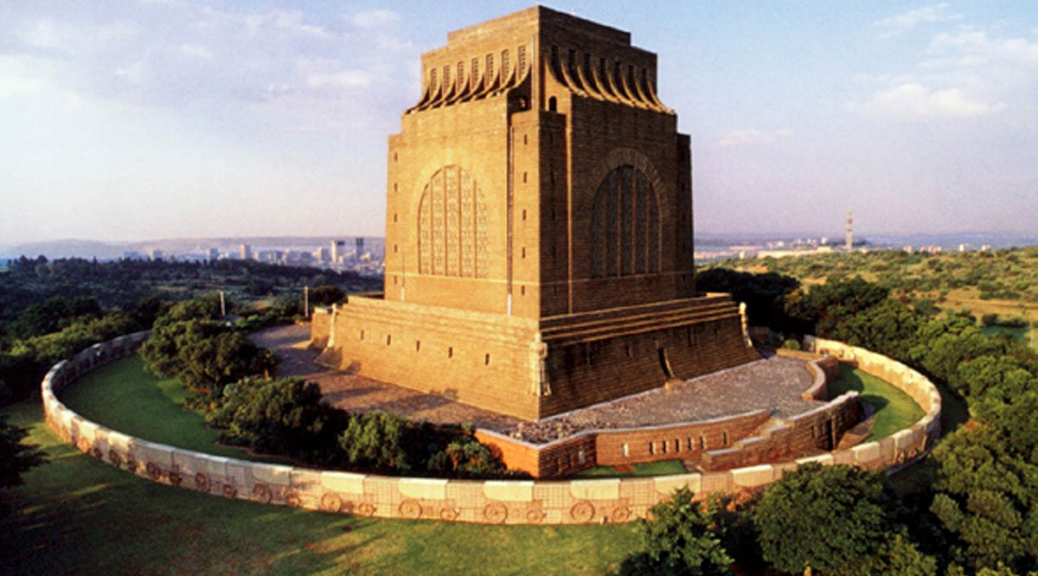What we’ve experienced, which has provoked much thought and emotion, are the many ways in which one history can be told. In the last blog post, we focused on the how the oppressed experienced apartheid, which, on this cross-cultural, is intentionally what we’re choosing to focus on first. In this blog post, we will elaborate on the narrative that the apartheid regime wanted to be heard. And it was, and still is in ways, heard loud and clear. Here we will go into depth of the white, Afrikaner historical perspective of apartheid.
So the day after we went to the Apartheid Museum, we went to the Voortrekker Monument, which told a narrative beginning in the early to mid 1800s. We traced a very specific picture that was being painted through the carvings of the walls of the monument; the bias was in favor of the Afrikaners and what they would consider their struggle.
Here’s what we gathered: the Dutch didn’t come intending to settle, but ended up doing so. The monument’s walls have stone carvings, which wrap around the main front room, depicting South African history from the Dutch (known as the Boer’s) lens. The story starts and ends with depictions of agreements, the first being between the Boers and the Zulu and the last being between the British and the Boer. Both agreements ended in “betrayal.” These betrayals had a galvanizing effect on forming the identity of who would become the Afrikaners.
In all of the depictions, the Boers are portrayed as victims of oppression under the native South African tribes present on the land they settled. This view of their victimization began when the Dutch were sent to run an outpost in South Africa for trade ships to stop at on their way to India. This victim view continues as they portray themselves in the monument as innocent, while the natives
brutalize them. These natives were usually depicted as male, violent, and animal-like in demeanor. Almost every carved scene portrays Boer women at the center, helping the viewer to sympathize with the Boer, as noble protectors of women and children subject to this native-inflicted struggle.
A significant historical event that framed the Afrikaner history into a mythology was the Boer’s victory over the Zulu in the Battle of Blood River. This battle took place between nearly 500 Boer and 10,000-12,000 Zulu. During this battle, the local river was said to run red with blood, hence the name. This battle was so commemorative that it today is still marked as a significant part of the Afrikaner history.Furthermore, the Voortrekker was erected in 1936 just after the British had come and imposed many oppressive laws and even placed many Boers in concentration camps while attempting to colonize South Africa. This oppression is another galvanizing event in the Afrikaner past that helped shape their identity leading up to the Apartheid era. The Voortrekker is a manifestation of Afrikaner mythology, and a shrine to commemorate the “struggles” that the Boer settlers overcame.
photo credit: https://www.safarinow.com/destinations/groenkloof/galleriesandmuseums/voortrekker-monument.aspx


